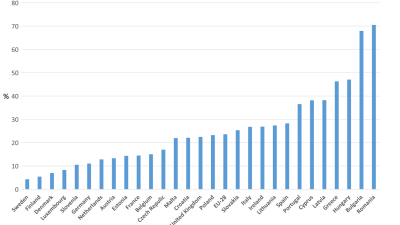An extra 200,000 children will be pushed into absolute poverty by the coalition's policy of capping annual increases in many benefits and tax credits, according to an estimate released by the Department for Work and Pensions (DWP). The estimate was uncovered by a freedom of information request submitted by the Child Poverty Action Group.
Defining absolute poverty as living on less than 60 per cent of median disposable household income as at 2010-11, uprated for inflation, the DWP gives a 'broad estimate' that around 200,000 extra children will be living in absolute poverty by the end of 2015-16 (the last year of the three-year cap on annual increases in most working-age benefits/tax credits).
The DWP letter cautions that it is 'misleading' to look at the impacts of uprating in isolation. It says the coalition is investing in tackling the root causes of child poverty through making work pay. It adds that looking at income in isolation is 'not a helpful measure' to track progress towards the target of eradicating child poverty.
CPAG points out that, according to the DWP letter, the coalition has also failed to make any assessment of the impact of the uprating cap on either material deprivation or persistent poverty among children – despite having statutory targets for both these measures under the Child Poverty Act.
Along with the DWP letter, CPAG published an analysis by Landman Economics of the combined effect of tax and benefit changes under the coalition. This shows that an increase of 600,000 children in absolute child poverty is likely between 2010 and 2015.
Source: Letter from Department for Work and Pensions, 13 March 2013
Links: DWP letter | CPAG press release | Landman Economics analysis (spreadsheet) | Inside Housing report



 PSE:UK is a major collaboration between the University of Bristol, Heriot-Watt University, The Open University, Queen's University Belfast, University of Glasgow and the University of York working with the National Centre for Social Research and the Northern Ireland Statistics and Research Agency. ESRC Grant RES-060-25-0052.
PSE:UK is a major collaboration between the University of Bristol, Heriot-Watt University, The Open University, Queen's University Belfast, University of Glasgow and the University of York working with the National Centre for Social Research and the Northern Ireland Statistics and Research Agency. ESRC Grant RES-060-25-0052.






